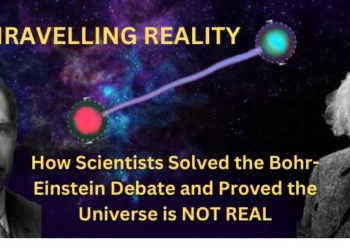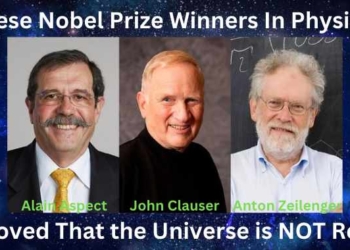Video Source: Science Magazine
Science Magazine has named the image of a supermassive black hole captured by the Event Horizon Telescope as its 2019 Breakthrough of the Year. The image reveals one of the most elusive phenomena in the universe. Black holes have gravity so strong that they capture and consume everything surrounding them, including light. The historic image of the distant stellar object quickly became the most downloaded image in the history of the National Science Foundation's website. (Read more below about the Breakthrough of the Year).
First, here are the nine runners-up:
1. K-Pg impact and aftermath – In Mexico, researchers have drilled rock cores from the Chicxulub crater. The cores chronicle in minute-by-minute detail the asteroid impact that wiped out the dinosaurs. Other studies have revealed how the impact immediately destroyed living things thousands of kilometers away, and how mammals and plants recovered in the thousands of years that followed.
2. Quantum leap – A team of physicists claimed its rudimentary quantum computer performed a calculation in 200 seconds, that would overwhelm a conventional supercomputer. The achievement is known as quantum supremacy, and it marks a significant milestone on the long road to a fully functioning quantum computer.
3. Artificial Intelligence masters multiplayer poker – Artificial intelligence systems have conquered a variety of complex two-person games. But this year, a system called Pluribus upped the ante. It beat professional players in thousands of six-hand games of no-limit Texas Hold ’em poker, a vastly more complex challenge.
4. Denisovans come into focus – Denisovans, the extinct cousins of Neanderthals, have been known only by scraps of fossils from a Russian cave in Siberia. But their genetic traces are found in modern humans, especially in Melanesia and Australia. This year, scientists used a new protein method to identify a jaw bone found on the Tibetan Plateau as Denisovan. It's the first physical trace of a Denisovan found outside Siberia. And another research group used genetic data to reconstruct the face of a Denisovan girl.
5. Ebola drugs come into focus – The search for effective treatments for Ebola has seen a string of disappointments. But this year, two drugs tested during the Ebola outbreak in the Democratic Republic of the Congo, dramatically increased a patient's chance of survival.
6. Close-up of Arrokoth – NASA’s New Horizons spacecraft celebrated the new year by relaying images of an icy object from the far reaches of the Solar System, 1.6 billion kilometers beyond Pluto. It looks like two merged lumpy pancakes. Researchers believe it hasn't been disturbed since the formation of the Solar System, and it holds clues to how planets form.
7. Microbiome-based malnutrition treatment – A series of studies have indicated that some severely malnourished children recuperate slowly, if at all because their gut microbes remain in an immature state. This year, researchers came up with nutritional supplements the gut flora in these children recover, paving the way for more effective treatments.
8. Cystic fibrosis drug combo approved – A drug combination approved this year in the United States, aims to turn Cystic fibrosis from a progressively damaging lung disease, into a manageable chronic illness for most patients. The treatment, which counteracts the effects of a genetic mutation carried by 90% of Cystic fibrosis patients, comes 30 years after researchers identified the gene behind the disease.
9. A microbial ancestor of us all – This year, microbiologists took a major step toward understanding the origin of eukaryotes, the group that includes plants, animals, and other organisms with cell nuclei. After 12 years of trying, they succeeded in culturing a microbe that belongs to an elusive group called Asgard archaea. They are the closest relatives to eukaryotes, according to recent DNA analyses. Now, researchers have this missing link in hand to study.
And now, the Breakthrough of the Year (starts at 4:07):
In a technical tour de force, astronomers combined observations from dozens of radio telescope dishes at eight observatories around the globe, to generate the first image of a black hole. The image shows a ring of light surrounding a supermassive black hole at the center of a galaxy 53 million light-years from Earth. Science is recognizing this impressive international collaboration, and its impact on our understanding of the cosmos, as the 2019 Breakthrough of the Year.















![Everything You Ever Wanted to Know About 9/11 Conspiracy Theory in Under 5 Minutes [VIDEO] | by James Corbett](https://consciouslifenews.com/wp-content/uploads/2018/09/911-a-conspiracy-theory-120x86.jpg)
